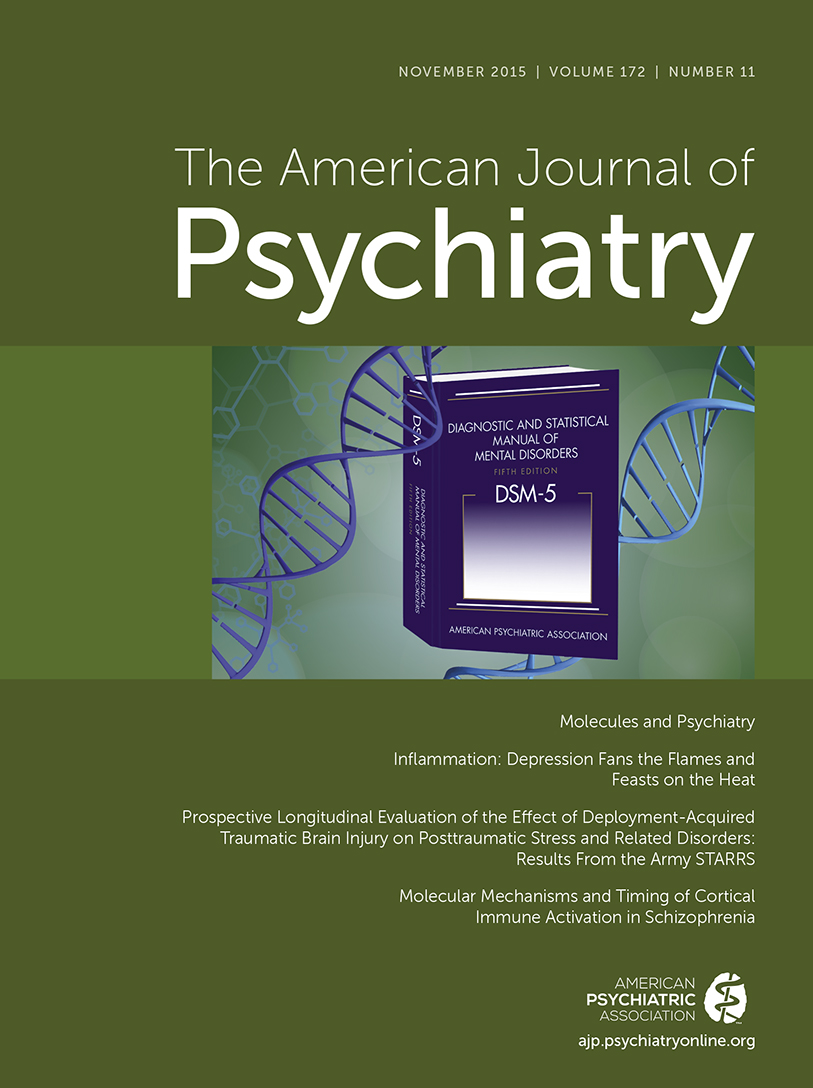The Spectrum of Psychiatric Symptoms in Wilson’s Disease: Treatment and Prognostic Considerations
Case Presentation
History of Present illness
| Signs and Symptoms | Medications | |||||
|---|---|---|---|---|---|---|
| Time | Psychiatric | Neurological | Gastrointestinal and Hepatic | Laboratory and Imaging Results | General | Psychotropic |
| Month 0 | None | Tingling of tongue, lips, fingertips | None | Brain MRI shows diffuse area of increased T2 signal in the white matter of the pons to the midbrain, extending into the midline cerebellar white matter | None | None |
| Month 1 | Depression | All the above plus decreased taste, perioral burning, drooling, gait unsteadiness, bladder urgency and hesitancy | None | EMG studies normal; MRI shows no interval change in the brain lesions; cervical spine MRI normal; lumbar puncture results normal | None | Citalopram for 1 month, no effect, discontinued |
| Month 8 | None | All the above plus weakness in all extremities. Paresthesias on head, slowed speech, cognitive slowing | None | Ceruloplasmin level <2 mg/dL (ref. range, 14–47.8); serum copper level, 0.25 μg/dL (ref. range, 0.75–1.45); 24-hour urine copper level, 187 μg/dL (ref. range, 15–60) | None | None |
| Wilson’s disease diagnosis | Trientine and zinc are initiated | |||||
| Month 8.5 | Psychosis (delusions, grandiosity, thought disorder); BPRS, 91 → 55 | Limitation of upward gaze, ptosis, neck tilt with chin down and to the left | Diarrhea with blood in stools secondary to trientine. Diarrhea resolved | Prednisone, 40 mg/day, for trientine-induced colitis. Trientine discontinued. Prednisone discontinued. | Olanzapine, one dose, 2.5 mg; discontinued because of dystonia. Quetiapine at 50 mg h.s. induced hypotension; dosage was decreased, then titrated slowly to 400 mg, with intermittent adherence | |
| Month 10 | Psychosis worsening, Capgras syndrome; BPRS, 78. Psychosis starts resolving; BPRS, 58 | Severe parkinsonism: shuffling gait, cogwheeling, bradykinesia, drooling (haloperidol induced) | Diarrhea returns 3 days after resuming trientine | Trientine resumed. Prednisone, 10 mg/day, for colitis; no exacerbation of psychosis | Psychiatric hospitalization, 4 days. Quetiapine discontinued. Haloperidol, 20 mg/day, 5 days. Haloperidol decreased to 5 mg/day because of parkinsonian symptoms. Quetiapine reintroduced, titrated to 150 mg/day. Benztropine, up to 2 mg/day. Lorazepam initially for insomnia, later changed to clonazepam | |
| Months 11–16 | Tangential speech slowly resolving; insomnia. No delusions; BPRS, 51 | Parkinsonism improving | Zinc | Haloperidol tapered off over 2 weeks; benztropine tapered off over 1 month. Clonazepam, 0.5 mg twice a day. Quetiapine, 150 mg/day | ||
| Month 17 | Resolved; BPRS, 27 | Resolved | Ceruloplasmin level, 3 mg/dL; serum copper level, 0.12 μg/dL; 24-hour urine copper level, 49 μg/L | Zinc | Quetiapine, clonazepam tapered off | |
| Month 21 | Depression; BPRS, 29 | None | Zinc | Sertraline, 50 mg, 6 months, good results | ||
| Months 27–56 | None; BPRS 24 | None | Zinc | None | ||
Mental Status Examination and Pertinent Physical Findings
Psychosocial History
Laboratory Data
Treatment Course
Discussion
Background: Psychiatric Manifestations in Wilson’s Disease
Treatment and Prognosis of Psychiatric Manifestations of Wilson’s Disease
Sensitivity to antipsychotic medications.
The setting where treatment is provided for psychiatric symptoms.
Duration and goal of treatment.
Conclusions
References
Information & Authors
Information
Published In
History
Authors
Funding Information
Metrics & Citations
Metrics
Citations
Export Citations
If you have the appropriate software installed, you can download article citation data to the citation manager of your choice. Simply select your manager software from the list below and click Download.
For more information or tips please see 'Downloading to a citation manager' in the Help menu.
View Options
View options
PDF/EPUB
View PDF/EPUBLogin options
Already a subscriber? Access your subscription through your login credentials or your institution for full access to this article.
Personal login Institutional Login Open Athens loginNot a subscriber?
PsychiatryOnline subscription options offer access to the DSM-5-TR® library, books, journals, CME, and patient resources. This all-in-one virtual library provides psychiatrists and mental health professionals with key resources for diagnosis, treatment, research, and professional development.
Need more help? PsychiatryOnline Customer Service may be reached by emailing [email protected] or by calling 800-368-5777 (in the U.S.) or 703-907-7322 (outside the U.S.).

